
The Untamed Beauty of Kisatchie National Forest
Explore the diverse landscapes and rich biodiversity of Kisatchie National Forest, a haven for outdoor enthusiasts in the heart of Louisiana.
Kisatchie National Forest, located in the heart of Louisiana, is a lush expanse of natural beauty that captivates all who visit. Spanning over 600,000 acres, this forest offers a diverse landscape of piney woods, hardwood forests, and breathtaking vistas. It's a haven for outdoor enthusiasts, offering a rich tapestry of flora and fauna, as well as numerous recreational activities. Adventure seekers will find plenty to do in Kisatchie National Forest. The forest boasts over 100 miles of trails for hiking, biking, and horseback riding. The Kisatchie Hills Wilderness Area, with its rugged terrain and scenic beauty, is particularly popular for backcountry hiking and camping. For those who enjoy water activities, the forest has several lakes and streams perfect for fishing, canoeing, and swimming. Wildlife is abundant in Kisatchie, making it a prime location for birdwatching and nature photography. Visitors can spot white-tailed deer, wild turkeys, and even the occasional black bear. The forest is also home to the endangered red-cockaded woodpecker. With its varied ecosystems and rich biodiversity, Kisatchie is a paradise for nature lovers and a perfect escape from the hustle and bustle of city life.
Local tips in Kisatchie National Forest
- Bring plenty of water and snacks, as amenities are limited within the forest.
- Wear appropriate footwear for hiking, as trails can be rugged and uneven.
- Check the weather forecast and be prepared for changing conditions.
- Visit the ranger stations for maps and information on the best trails and activities.
- Respect wildlife and maintain a safe distance from animals.
- Consider visiting in the spring or fall for the most pleasant weather.
The Untamed Beauty of Kisatchie National Forest
Kisatchie National Forest, located in the heart of Louisiana, is a lush expanse of natural beauty that captivates all who visit. Spanning over 600,000 acres, this forest offers a diverse landscape of piney woods, hardwood forests, and breathtaking vistas. It's a haven for outdoor enthusiasts, offering a rich tapestry of flora and fauna, as well as numerous recreational activities. Adventure seekers will find plenty to do in Kisatchie National Forest. The forest boasts over 100 miles of trails for hiking, biking, and horseback riding. The Kisatchie Hills Wilderness Area, with its rugged terrain and scenic beauty, is particularly popular for backcountry hiking and camping. For those who enjoy water activities, the forest has several lakes and streams perfect for fishing, canoeing, and swimming. Wildlife is abundant in Kisatchie, making it a prime location for birdwatching and nature photography. Visitors can spot white-tailed deer, wild turkeys, and even the occasional black bear. The forest is also home to the endangered red-cockaded woodpecker. With its varied ecosystems and rich biodiversity, Kisatchie is a paradise for nature lovers and a perfect escape from the hustle and bustle of city life.
When is the best time to go to Kisatchie National Forest?
Iconic landmarks you can’t miss
Forts Randolph & Buhlow State Historic Site
Explore the historical significance of Forts Randolph & Buhlow in Pineville, Louisiana—a captivating journey through military history along the scenic riverfront.
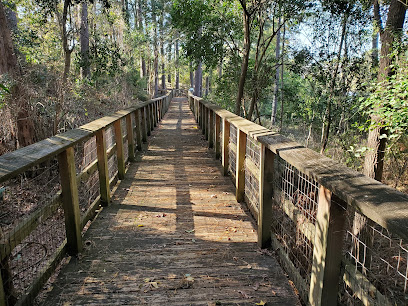
Wolf Rock Cave and historical marker
Explore the enchanting Wolf Rock Cave in Louisiana, a stunning hiking area rich in natural beauty and historical significance, perfect for adventurous tourists.
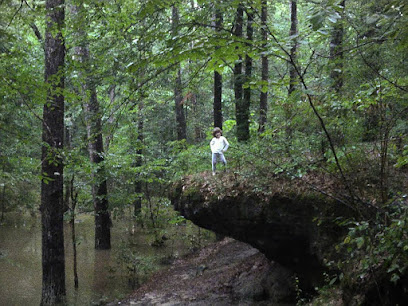
Wild Azalea Trailhead
Discover the breathtaking beauty of the Wild Azalea Trailhead in Kisatchie National Forest, Louisiana – a hiker's paradise filled with scenic trails and vibrant wildlife.
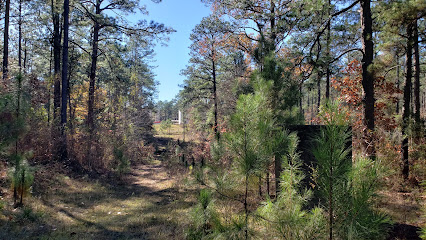
Fort Derussy State Historic Site
Explore the rich history and scenic beauty of Fort Derussy State Historic Site, a must-visit landmark in Louisiana's historical landscape.
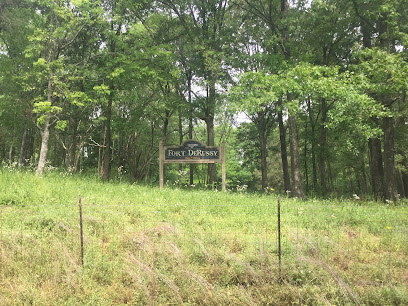
Kisatchie Hills Wilderness
Discover the breathtaking landscapes and abundant wildlife of Kisatchie Hills Wilderness, Louisiana's natural gem perfect for outdoor adventures.
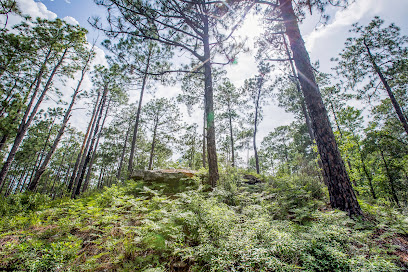
Unmissable attractions to see
Alexandria Zoological Park
Discover the Alexandria Zoological Park, a premier family-friendly attraction showcasing wildlife and conservation education in Louisiana.
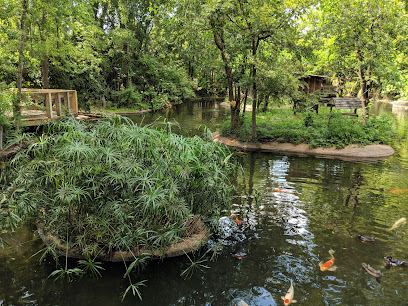
Chicot State Park
Discover Chicot State Park: Louisiana's largest natural lake, offering endless outdoor adventures amidst breathtaking landscapes and abundant wildlife.
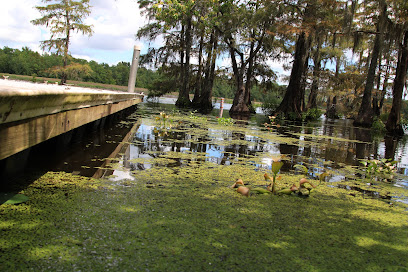
Gator Chateau
Discover the thrill of alligator encounters and learn about Louisiana's unique wildlife at Gator Chateau, a captivating tourist attraction in Jennings.
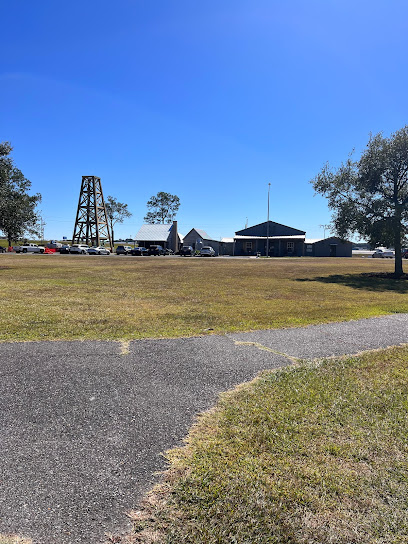
Kees Park
Discover the serene beauty of Kees Park, a perfect blend of nature and recreation in Pineville, Louisiana, ideal for families and outdoor enthusiasts.
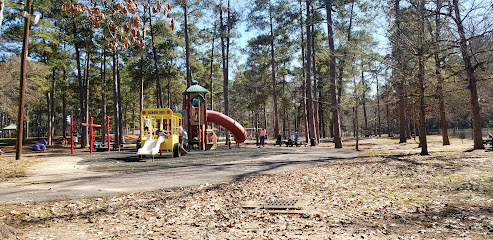
Gone Wild Safari
Explore the wonders of wildlife at Gone Wild Safari in Pineville, Louisiana – an unforgettable family-friendly adventure in a natural setting.
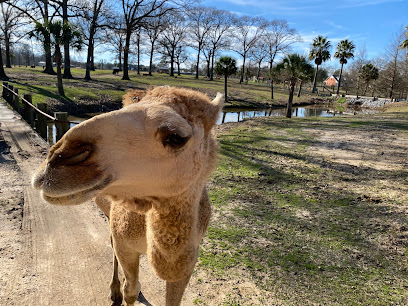
Cane River Creole National Historical Park
Explore the rich cultural heritage and breathtaking landscapes at Cane River Creole National Historical Park, a unique historical site in Louisiana.
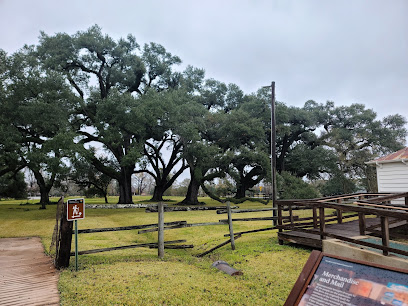
Kent Plantation House
Discover the enchanting Kent Plantation House in Alexandria, Louisiana, a beautiful blend of history, culture, and stunning Creole architecture.
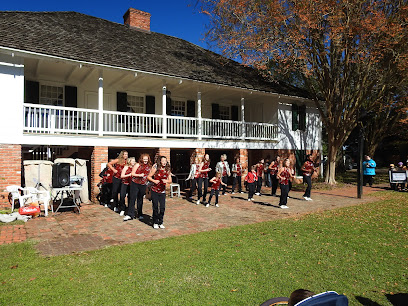
Compton Park
Compton Park: A peaceful retreat in Alexandria, Louisiana, perfect for nature lovers and outdoor enthusiasts.
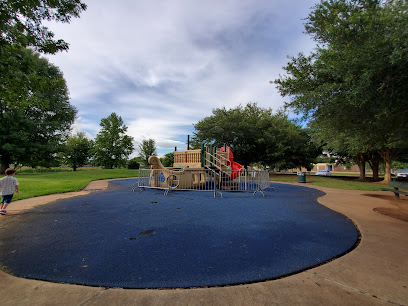
Alexandria Museum of Art
Explore the Alexandria Museum of Art, a cultural haven showcasing diverse artistic expressions in the heart of Louisiana.
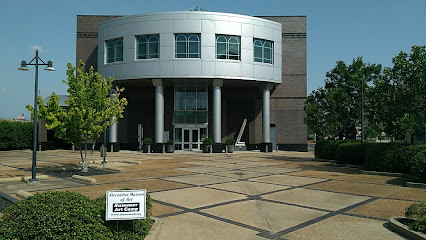
Louisiana State Arboretum State Preservation Area
Discover the serene landscapes of Louisiana State Arboretum, a nature preserve showcasing the region's diverse flora and inviting trails for all.
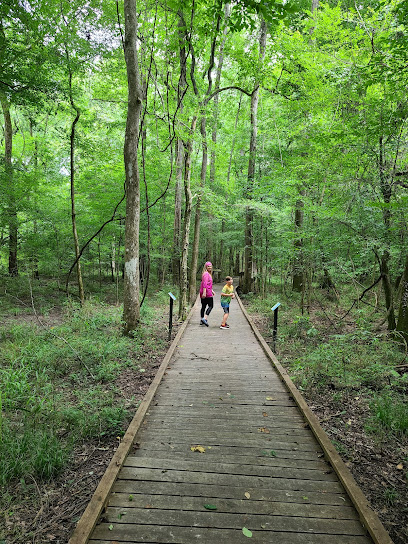
T.R.E.E. House Children's Museum
Discover creativity and learning at T.R.E.E. House Children's Museum, a top family-friendly destination in Alexandria, Louisiana, offering interactive exhibits and fun activities.

Gothic Jail
Discover the chilling history and haunting tales at Gothic Jail, a captivating historical landmark in DeRidder, Louisiana.

Forts Randolph & Buhlow State Historic Site
Explore Forts Randolph & Buhlow State Historic Site, a captivating blend of history and nature in Louisiana’s scenic riverside landscape.
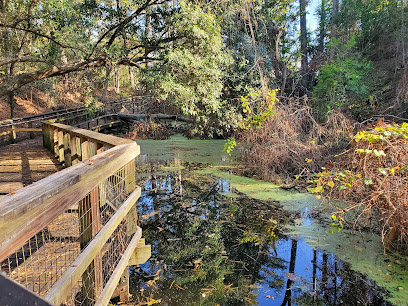
Wolf Rock Cave and historical marker
Explore Wolf Rock Cave in Leesville, LA – a stunning blend of natural beauty and historical intrigue awaits you in this enchanting hiking area.
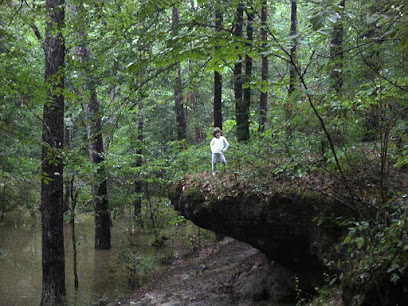
mardi gras museum of imperial calcasieu
Explore the vibrant culture and history of Mardi Gras at the Museum of Imperial Calcasieu in Lake Charles, Louisiana.
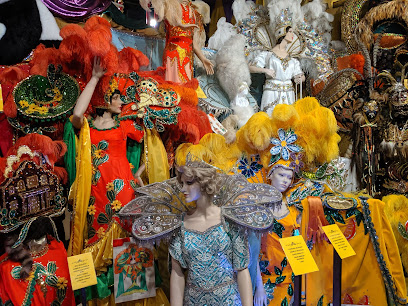
Essential places to dine
Walk-On's Sports Bistreaux - Alexandria Restaurant
Discover the ultimate dining experience at Walk-On's Sports Bistreaux in Alexandria - where delicious Southern cuisine meets exciting sports action.
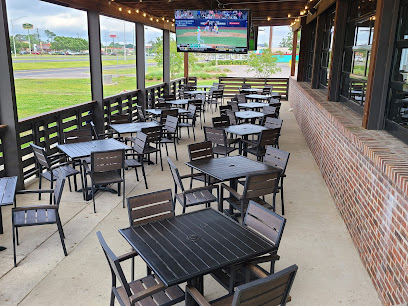
Cracker Barrel Old Country Store
Discover authentic Southern cuisine and unique shopping at Cracker Barrel Old Country Store in Alexandria.
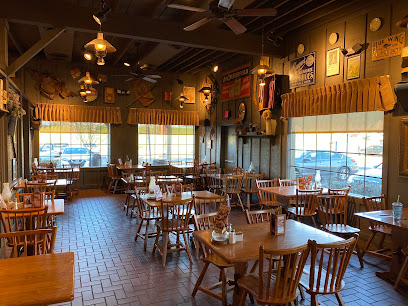
Golden Corral Buffet & Grill
Experience the best of American cuisine at Golden Corral Buffet & Grill in Alexandria – where deliciousness meets variety.
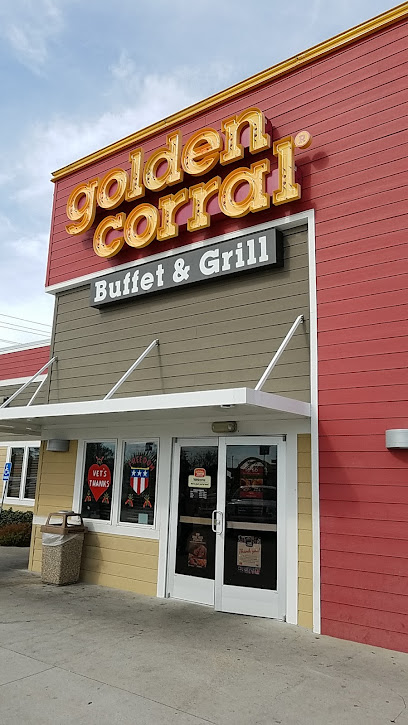
Cajun Catfish Buffet
Discover authentic Cajun flavors at Cajun Catfish Buffet in Ville Platte - where seafood meets tradition in a delightful buffet experience.
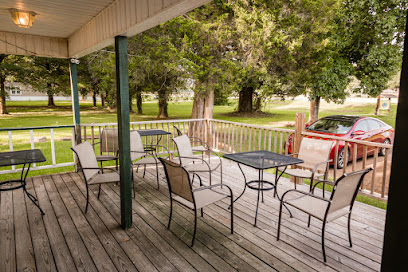
Rosie Jo's
Savor authentic Creole cuisine at Rosie Jo's in Alexandria, where every dish tells a story of Louisiana's rich culinary heritage.

El Paso Mexican Grill & Bar
Discover vibrant flavors at El Paso Mexican Grill & Bar in Alexandria – where authentic Mexican cuisine meets a lively atmosphere.
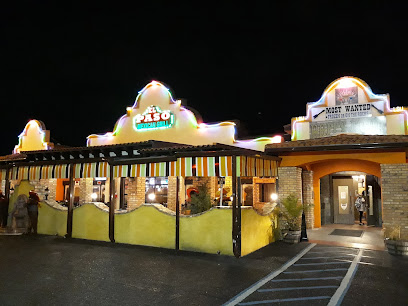
Pamela's Bayou In A Bowl
Experience authentic Southern American cuisine at Pamela's Bayou In A Bowl in Alexandria - where every meal tells a story.
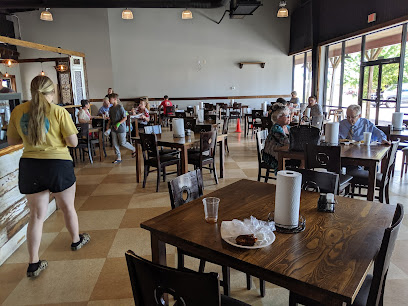
Huddle House
Discover authentic Southern comfort food at Huddle House in Alexandria, where every meal feels like home.
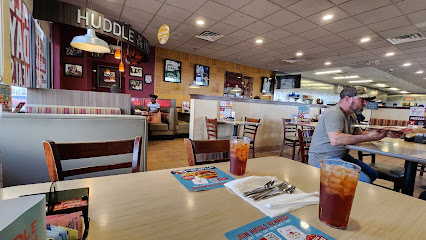
Fiery Crab Seafood Restaurant And Bar - Alexandria
Discover delicious crab dishes at Fiery Crab Seafood Restaurant & Bar in Alexandria, where every meal is a flavorful journey into coastal cuisine.
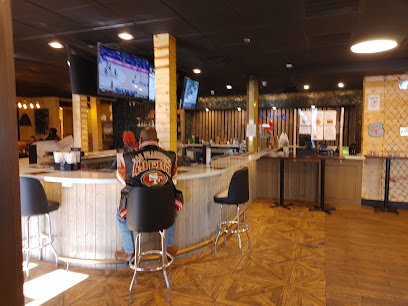
Tunk's Cypress Inn
Discover the vibrant flavors of Louisiana at Tunk's Cypress Inn – your ultimate destination for fresh seafood delights.
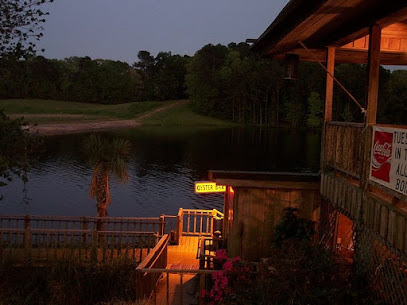
Debarge's Crawfish
Savor authentic Creole flavors at Debarge's Crawfish, where fresh seafood meets Southern hospitality in Alexandria, Louisiana.
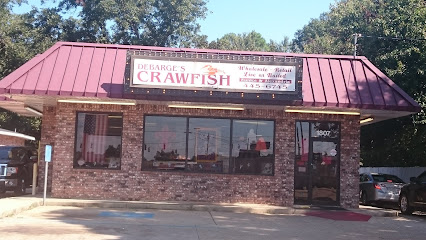
Red River Seafood & Steakhouse
Experience exceptional seafood and steak dishes at Red River Seafood & Steakhouse in Pineville - a true taste of Louisiana's culinary heritage.
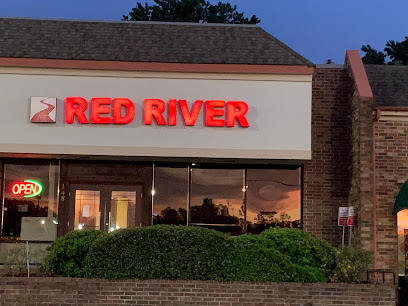
D.I.'s Cajun Restaurant
Experience authentic Cajun cuisine at D.I.'s Cajun Restaurant in Basile, where every dish is a celebration of Louisiana's rich culinary heritage.
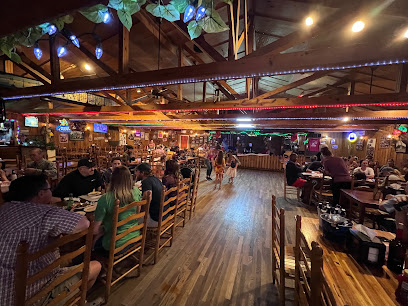
Spoonbill Watering Hole & Restaurant
Experience authentic Southern cuisine at Spoonbill Watering Hole & Restaurant in Lafayette - where flavor meets hospitality.
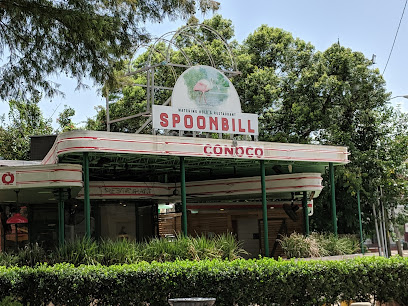
Swamp Daddy's
Experience authentic Louisiana seafood at Swamp Daddy's - where flavor meets hospitality in Alexandria.
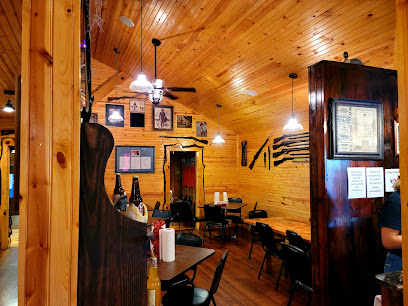
Markets, malls and hidden boutiques
Marshalls
Explore fashion and value at Marshalls, a premier department store in Alexandria, LA, offering trendy clothing and unique accessories for all ages.

Alexandria Flea Market & Storage
Explore unique treasures and local flavors at Alexandria Flea Market & Storage - a vibrant shopping experience in Louisiana.
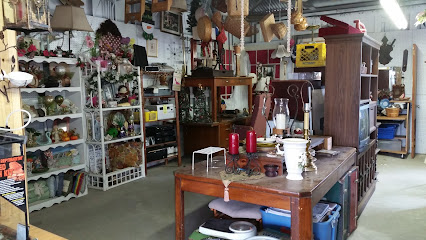
Kisatchie National Forest
Explore the lush landscapes and rich biodiversity of Kisatchie National Forest in Louisiana, a true paradise for nature lovers and adventure seekers.
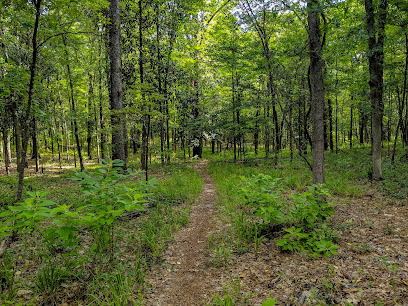
Ann's Hallmark Shop
Explore Ann's Hallmark Shop in Alexandria for unique gifts, festive decor, and heartfelt cards, making it your go-to spot for special occasions.

Brittany's Boutique
Explore Brittany's Boutique in Alexandria, where your dream wedding attire awaits with stunning dresses, tuxedos, and personalized service.

Michael's Nursery
Discover the lush landscapes and diverse plant offerings at Michael's Nursery, your go-to garden center in Glenmora, Louisiana.
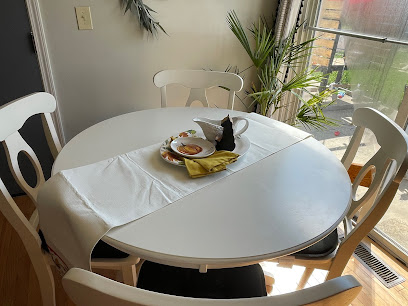
Louisiana Purchase
Explore the Louisiana Purchase Gift Shop for unique souvenirs and local crafts that capture the spirit of Natchitoches, Louisiana.
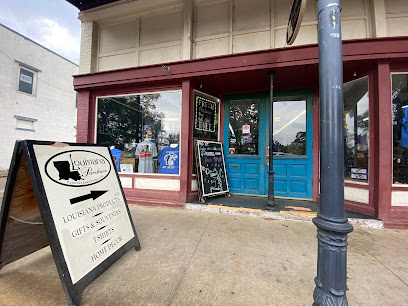
Kelly's Korner
Explore Kelly's Korner in Oakdale, LA — a delightful gift shop and boutique showcasing local artistry, floral designs, and unique treasures.

Hoity Toity Boutique
Discover unique fashion and exquisite jewelry at Hoity Toity Boutique in Alexandria, Louisiana, where style meets local charm.
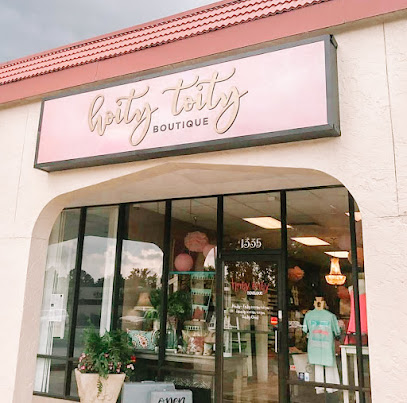
Georgia's Gift Shop
Explore Georgia's Gift Shop for unique souvenirs, local pottery, and T-shirts that embody the charm of Natchitoches, Louisiana.

Country Green
Experience the heart of Louisiana at Country Green, a community grocery store brimming with local flavors and Southern charm.
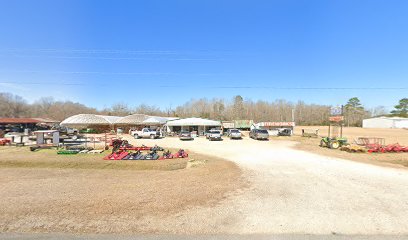
Jolie Femme Women's and Gift Boutique
Explore stylish women's apparel and unique gifts at Jolie Femme, a charming boutique in Alexandria, Louisiana, celebrating local craftsmanship.
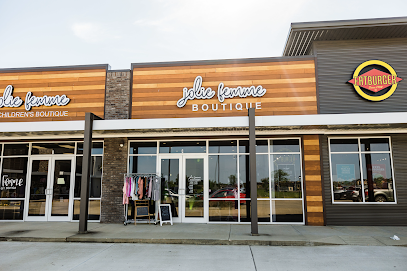
A Little Twisted
Discover unique gifts and delightful treats at A Little Twisted in Alexandria, a charming boutique that has something for everyone.
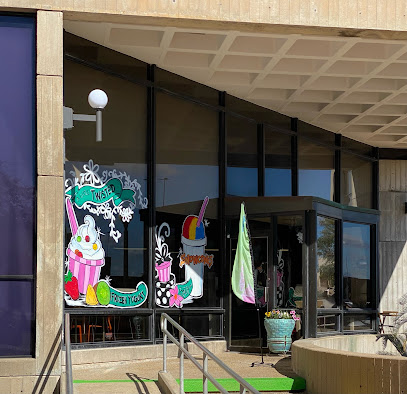
The River Store
Explore Glenmora, Louisiana with a stop at The River Store, your local convenience destination for essentials, beverages, and a taste of Southern hospitality.

For Your Seasons Boutique
Explore the unique fashion and artisanal gifts at For Your Seasons Boutique in Alexandria, Louisiana, a perfect blend of local culture and style.

Essential bars & hidden hideouts
Walk-On's Sports Bistreaux - Alexandria Restaurant
Experience the excitement of sports dining at Walk-On's Sports Bistreaux in Alexandria, where delicious food meets a lively atmosphere.
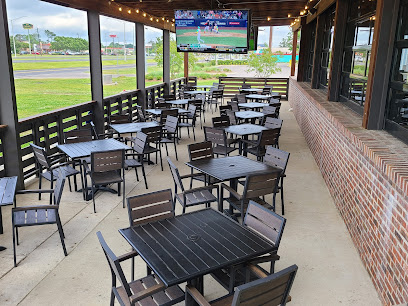
4th Quarter bar and grill
Experience the vibrant flavors of Louisiana at 4th Quarter Bar and Grill, where grilled delights and Southern hospitality meet in a lively atmosphere.
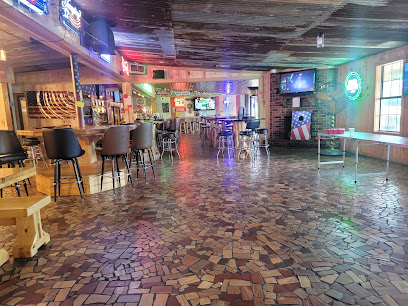
Fuzzie's Restaurant
Discover the heart of American cuisine at Fuzzie's Restaurant in Glenmora, LA, where delicious meals and Southern hospitality await every visitor.
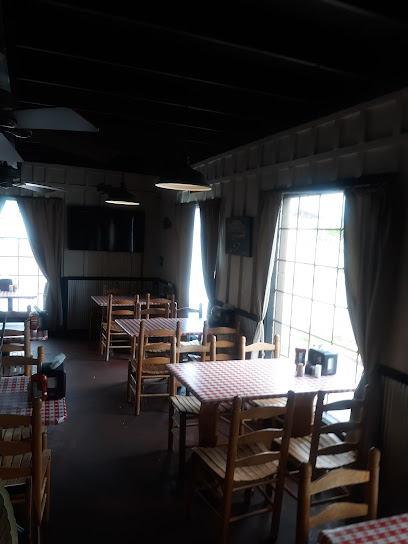
The Stick
Discover The Stick, a vibrant bar in Alexandria, Louisiana, offering an inviting atmosphere and a diverse drink selection for the perfect night out.
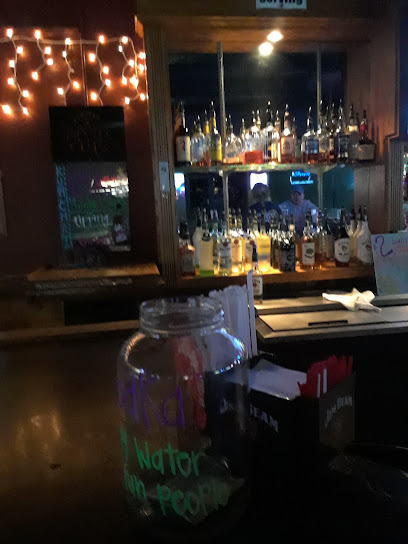
Shooters Billiards & Sports Bar
Discover the lively charm of Shooters Billiards & Sports Bar in Leesville, LA – a hub for billiards, sports, and unforgettable nightlife.

Hot Shots Inc.
Experience the vibrant nightlife at Hot Shots Inc. in Alexandria, Louisiana, where karaoke and friendly vibes await you.
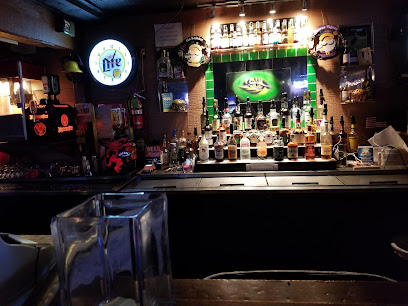
Top Shelf
Experience the vibrant nightlife at Top Shelf, Alexandria's premier bar known for its lively atmosphere and exceptional drink selection.
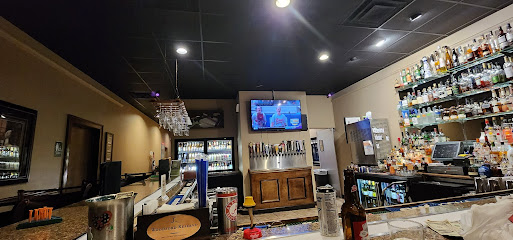
Bayview Yacht Club
Discover the Bayview Yacht Club in Alexandria, LA - a lively bar offering exceptional cocktails and a friendly atmosphere perfect for socializing.

The Mirror Room
Experience the vibrant nightlife at The Mirror Room, Alexandria's charming bar offering eclectic drinks and a cozy ambiance.

Tasting Room of Louisiana
Experience the rich flavors of Louisiana at Tasting Room of Louisiana, a grill lover's paradise in Alexandria.
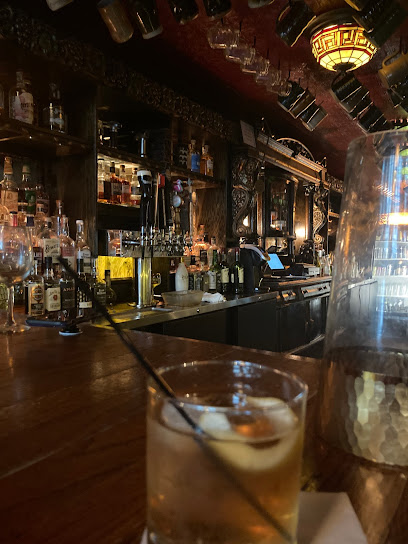
East Side Daiquiris On The Circle
Experience the thrill of sports and the taste of delicious daiquiris at East Side Daiquiris, Alexandria's favorite sports bar.
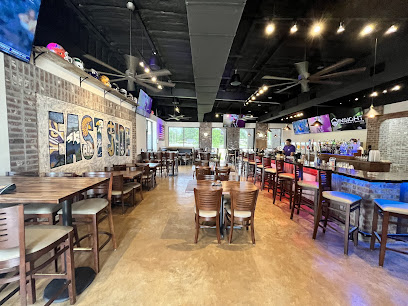
Frosty Factory
Experience the vibrant nightlife of Alexandria at Frosty Factory, a bar renowned for its creative cocktails and inviting atmosphere.
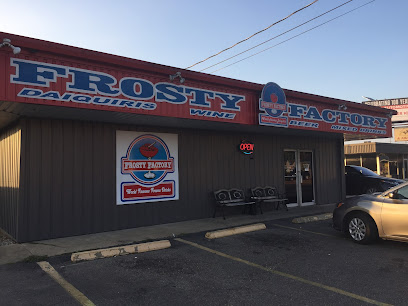
POUR HOUSE
Experience the vibrant nightlife of Leesville at Pour House, a bar known for its lively atmosphere and diverse drink selection.
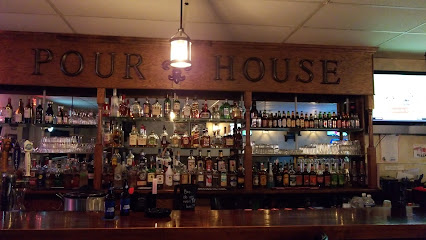
TP's Lounge
Discover the vibrant atmosphere and delicious offerings at TP's Lounge, a must-visit bar in Alexandria, Louisiana, perfect for relaxation and socializing.
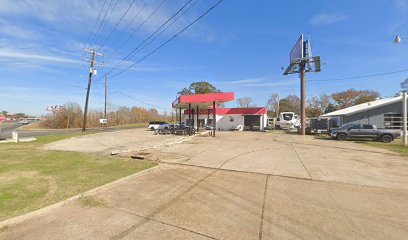
The Y Bar
Experience the authentic Cajun nightlife at The Y Bar in Ville Platte, where vibrant music and friendly locals create unforgettable memories.
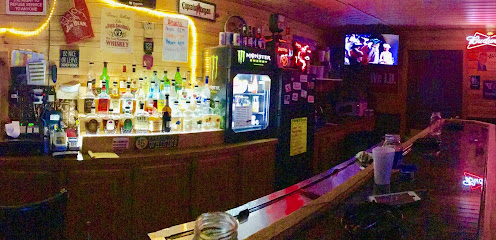
Local Phrases about Kisatchie National Forest
-
- HelloBonjour
[bon-zhoor] - GoodbyeAu revoir
[oh ruh-vwar] - YesOui
[wee] - NoNon
[nohn] - Please/You're welcomeS'il vous plaît/De rien
[seel voo pleh/duh ryen] - Thank youMerci
[mehr-see] - Excuse me/SorryExcusez-moi/Désolé
[ex-kew-zay mwah/deh-zoh-lay] - How are you?Comment ça va?
[koh-mahn sah vah] - Fine. And you?Bien. Et toi?
[byen. ay twah] - Do you speak English?Parlez-vous anglais?
[par-lay voo ahn-glay] - I don't understandJe ne comprends pas
[zhuh nuh kohm-prahn pah]
- HelloBonjour
-
- I'd like to see the menu, pleaseJe voudrais voir le menu, s'il vous plaît
[zhuh voo-dray vwahr luh meh-noo, seel voo pleh] - I don't eat meatJe ne mange pas de viande
[zhuh nuh mahnj pah duh vee-ahnd] - Cheers!Santé!
[sahn-tay] - I would like to pay, pleaseJe voudrais payer, s'il vous plaît
[zhuh voo-dray pay-yay, seel voo pleh]
- I'd like to see the menu, pleaseJe voudrais voir le menu, s'il vous plaît
-
- Help!À l'aide!
[ah layd] - Go away!Allez-vous en!
[ah-lay vooz ahn] - Call the Police!Appelez la police!
[ah-play lah poh-lees] - Call a doctor!Appelez un médecin!
[ah-play ahn may-deh-sahn] - I'm lostJe suis perdu
[zhuh swee pair-doo] - I'm illJe suis malade
[zhuh swee mah-lahd]
- Help!À l'aide!
-
- I'd like to buy...Je voudrais acheter...
[zhuh voo-dray zah-shey...] - I'm just lookingJe regarde juste
[zhuh ruh-gard zhewst] - How much is it?Combien ça coûte?
[kohm-byen sah koot] - That's too expensiveC'est trop cher
[say troh shehr] - Can you lower the price?Pouvez-vous baisser le prix?
[poo-veh voo beh-say luh pree]
- I'd like to buy...Je voudrais acheter...
-
- What time is it?Quelle heure est-il?
[kell ur ay-teel] - It's one o'clockIl est une heure
[eel ay oon ur] - Half past (10)Dix heures et demi
[dees ur ay dem-ee] - MorningMatin
[mah-tan] - AfternoonAprès-midi
[ah-pray me-dee] - EveningSoir
[swahr] - YesterdayHier
[yehr] - TodayAujourd'hui
[oh-zhoor dewee] - TomorrowDemain
[duh-mahn] - 1Un
[uhn] - 2Deux
[duh] - 3Trois
[twah] - 4Quatre
[kat] - 5Cinq
[sank] - 6Six
[sees] - 7Sept
[set] - 8Huit
[wheat] - 9Neuf
[nuff] - 10Dix
[dees]
- What time is it?Quelle heure est-il?
-
- Where's a/the...?Où est le/la...?
[oo ay luh/lah] - What's the address?Quelle est l'adresse?
[kell ay lah-dress] - Can you show me (on the map)?Pouvez-vous me montrer (sur la carte)?
[poo-veh voo muh mohn-tray (soor lah kart)] - When's the next (bus)?Quand est le prochain (bus)?
[kahn ay luh proh-shahn (bus)] - A ticket (to ....)Un billet (pour ....)
[uhn bee-yay (poor)]
- Where's a/the...?Où est le/la...?
History of Kisatchie National Forest
-
Long before European settlers arrived, the area now known as Kisatchie National Forest was inhabited by various Native American tribes, including the Caddo and the Attakapas. These tribes utilized the forest for hunting, gathering, and as a source of materials for tools and shelter. Archaeological evidence, such as pottery shards and arrowheads, reveal a rich history of indigenous life dating back thousands of years.
-
In the 16th and 17th centuries, Spanish and French explorers ventured into the region, drawn by its natural resources and strategic location. The forest served as a passageway for expeditions and was a site of early colonial encounters between Europeans and Native American tribes. The French, in particular, established trade routes through the area, exchanging goods with the indigenous peoples.
-
In 1803, the United States acquired the territory of Louisiana from France through the Louisiana Purchase. This acquisition included the land that is now Kisatchie National Forest. The forested area began to see an increase in American settlers, who utilized the land for logging, farming, and hunting. The rich biodiversity of the forest attracted naturalists and explorers looking to document the unique flora and fauna of the region.
-
Kisatchie National Forest was officially established in 1930, during a period of conservation and public land management efforts spearheaded by the federal government. The forest was named after the Kichai (Kitsatchie) tribe, a group affiliated with the Caddo Confederacy. Its creation aimed to protect the diverse ecosystems and provide sustainable use of the forest resources. The Civilian Conservation Corps played a significant role in developing infrastructure, including trails, roads, and recreational facilities.
-
During World War II, parts of Kisatchie National Forest were used as training grounds for the U.S. military. The forest's rugged terrain provided an ideal environment for preparing troops for combat. Camp Claiborne, located within the forest, was a major training facility where soldiers underwent rigorous drills and maneuvers. The remnants of these training sites can still be found throughout the forest, offering a glimpse into this critical period of American history.
-
Kisatchie National Forest holds cultural significance not only for its historical events but also for its ongoing role in the lives of local communities. Indigenous tribes, descendants of early settlers, and modern-day residents all have deep connections to the forest. Efforts to preserve the natural landscape and cultural heritage continue, with initiatives aimed at sustainable forest management, wildlife conservation, and promoting eco-tourism. The forest remains a living testament to the intertwined history of nature and human activity in Louisiana.
Kisatchie National Forest Essentials
-
Kisatchie National Forest is located in central and northern Louisiana. The nearest major airport is Alexandria International Airport, approximately 50 miles away from the forest's main entrance. From Alexandria, you can rent a car and drive via LA-28 W and US-167 N. Another option is to fly into Shreveport Regional Airport, which is about 120 miles from the forest. The forest is accessible by car, and the drive offers scenic views of Louisiana's countryside.
-
Getting around Kisatchie National Forest is best done by car, as the area is vast and public transportation options are limited. There are several well-maintained roads and trails within the forest. Car rentals are available at nearby airports and cities. For those interested in a more rugged experience, consider renting an off-road vehicle to explore some of the forest's more remote areas.
-
The official currency is the United States Dollar (USD). Major credit and debit cards are widely accepted at gas stations, hotels, and some of the larger stores near the forest. However, it's advisable to carry some cash, especially if you plan to visit smaller establishments or campgrounds within the forest, as card payment facilities may not be available.
-
Kisatchie National Forest is generally a safe destination for tourists. However, standard safety precautions are recommended. Be aware of your surroundings and keep your belongings secure. Avoid isolated areas after dark. While the forest itself is safe, some of the nearby urban areas may have higher crime rates. It's advisable to avoid unfamiliar neighborhoods in cities like Alexandria and Shreveport at night.
-
In case of an emergency, dial 911 for immediate assistance. The nearest hospitals are located in Alexandria and Natchitoches. It is recommended to have travel insurance that covers medical emergencies. For minor health issues, there are pharmacies in the nearby towns where you can purchase over-the-counter medications. Always inform someone of your travel plans, especially if you plan to hike or camp in remote areas of the forest.
-
Fashion: Do wear comfortable, weather-appropriate clothing, especially if you plan to hike. Dress in layers to adjust to changing weather conditions. Avoid wearing strong perfumes or fragrances to keep insects at bay. Religion: Respect any local customs or traditions you may encounter, although Kisatchie National Forest is not particularly religious. Public Transport: Public transport is limited, so plan to use a car. Be courteous to other drivers and follow local traffic laws. Greetings: A friendly 'hello' or a nod is a common greeting. Locals are generally friendly and open to conversation. Eating & Drinking: Do try local cuisine if you visit nearby towns. Don't leave food out unattended in the forest, as it can attract wildlife.
-
To experience Kisatchie National Forest like a local, consider visiting during the weekdays when it is less crowded. Participate in local events or festivals in nearby towns to get a taste of Louisiana culture. Engage with park rangers and local guides—they can offer invaluable insights and tips for your visit. Don't miss out on the Longleaf Vista Recreation Area for stunning views and the Wild Azalea Trail, which is the longest hiking trail in Louisiana.
Nearby Cities to Kisatchie National Forest
-
Things To Do in Lafayette
-
Things To Do in Natchez
-
Things To Do in Baton Rouge
-
Things To Do in Monroe
-
Things To Do in Beaumont
-
Things To Do in Port Arthur
-
Things To Do in Shreveport
-
Things To Do in McComb
-
Things To Do in Vicksburg
-
Things To Do in Houma
-
Things To Do in Longview
-
Things To Do in New Orleans
-
Things To Do in Galveston
-
Things To Do in Slidell
-
Things To Do in The Woodlands







